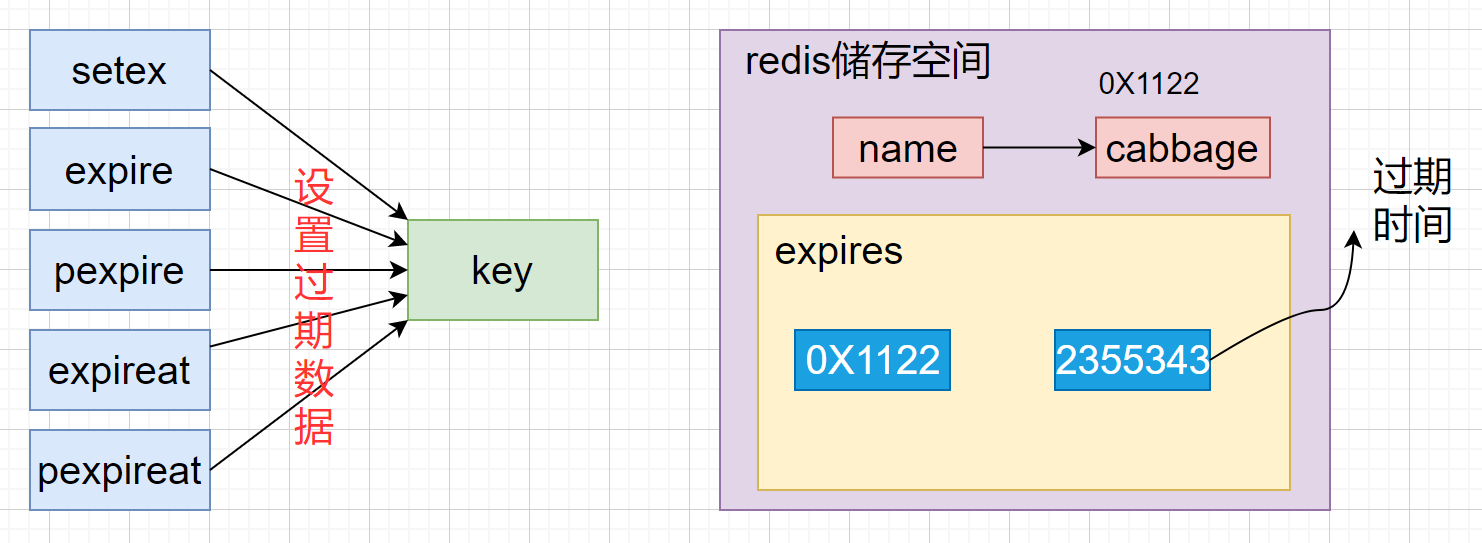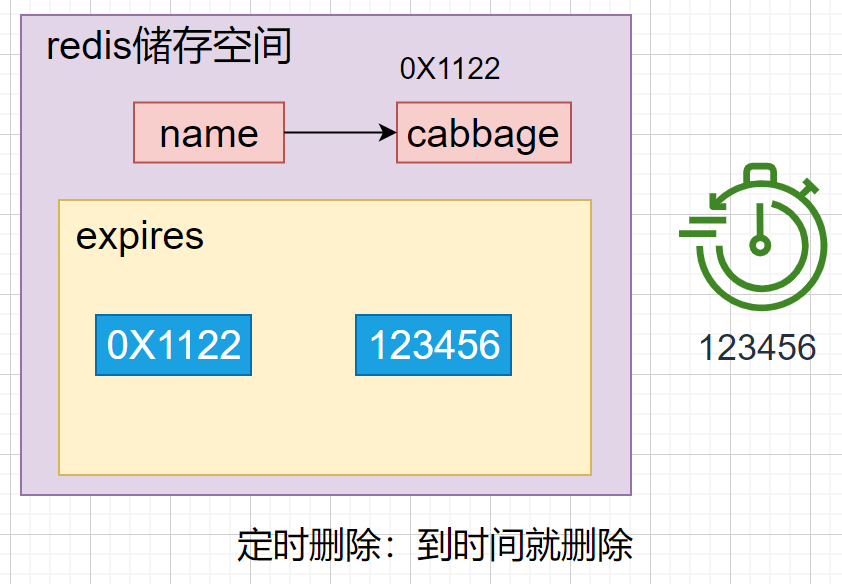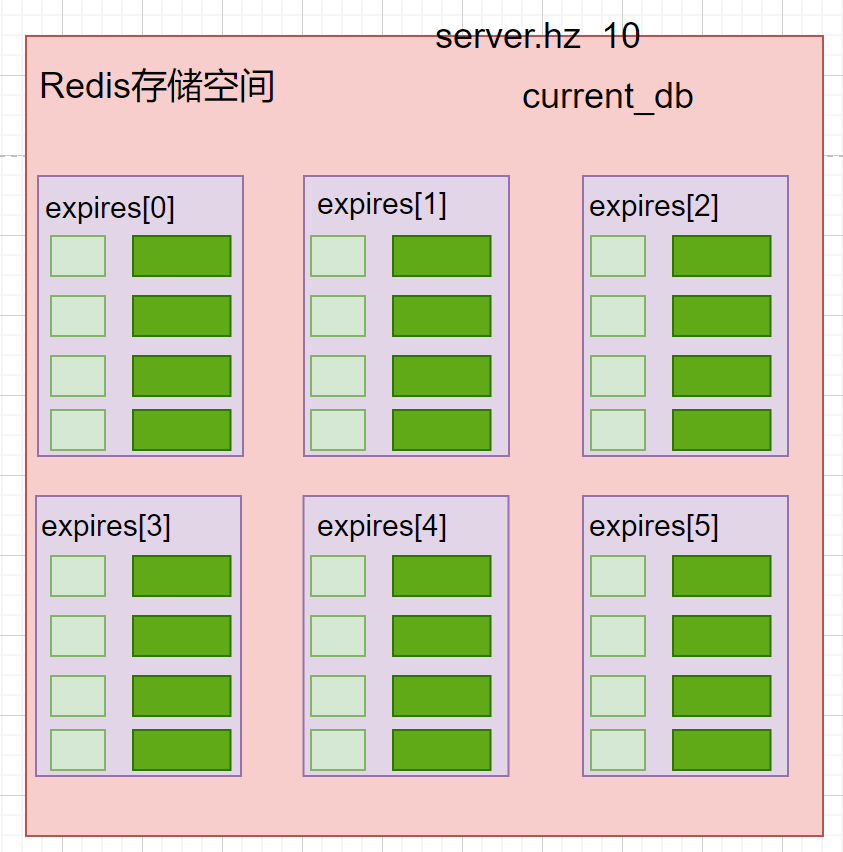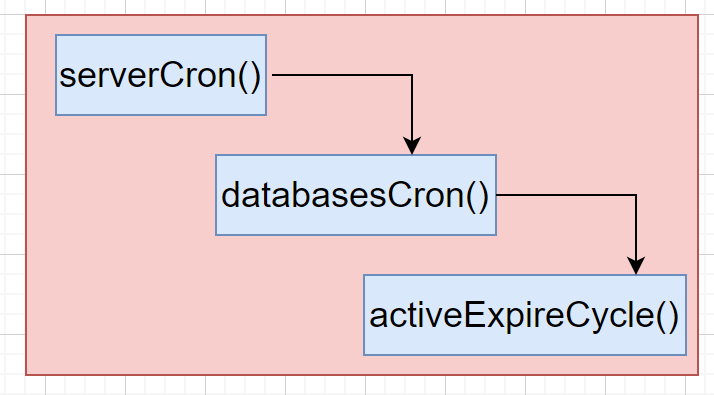 Database
Database
 Redis
Redis
 Three methods of Redis deletion strategy and analysis of eviction algorithm examples
Three methods of Redis deletion strategy and analysis of eviction algorithm examples
Three methods of Redis deletion strategy and analysis of eviction algorithm examples
1. Preface
Before the article begins, let me ask you a question: When we use the command: expire key secondSet the expiration time for a key, once the expiration time is up, Is the expired data corresponding to this key really deleted immediately by the server? The answer is that it will not be deleted immediately. Knowing this answer, let's take a look at how expired data is handled in Redis.
2. Data characteristics in Redis
Redis is a memory-level database. All data is stored in the memory. The data in the memory can obtain its status through TTL instructions. There are three states:
| Instruction result | State |
|---|---|
| XX | Time-sensitive data |
| -1 | Permanently valid data |
| -2 | has been Expired data or deleted data or undefined data |
3. Time-sensitive data storage structure

When we use instructions to set expired data, the address corresponding to the data will be placed in the expires space, and the storage method is hash. , the stored value is the expiration time.
4. Data deletion strategy
Data deletion strategy goal: Find a balance between memory usage and CPU usage. Failure to consider one or the other will result in a decline in overall redis performance. It may even cause server downtime or memory leaks
1. Scheduled deletion
Create a timer. When the key is set to have an expiration time and the expiration time is reached, the timer will be used. The server task immediately executes the deletion operation on the key
Advantages:Save memory, delete it when the time comes, and quickly release unnecessary memory usage
Disadvantages: The CPU is under great pressure. No matter how high the CPU load is at this time, the CPU is occupied, which will affect the redis server response time and instruction throughput

2. Lazy deletion
No processing will be done if the data reaches the expiration time. The next time the data is accessed, the
expireIfNeeded()function will be called to determine whether the data has expired: If it has not expired, return the data, find it has expired, delete it, and return it does not existAdvantages: Save CPU performance, delete only when you find it must be deleted
Disadvantages: The memory pressure is very high, and it appears Data that occupies memory for a long time

3. Periodic deletion

Process analysis :
When the Redis server starts and initializes, read the value of configuration server.hz, the default is 10
and then every second Execute the
serverCron()method 10 times, which is used to detect the serverserverCron()method will calldatabasesCron( )method, this method is used to traverse the database. Redis has 16 databases by default, starting from the first databasedatabasesCron()method TheactiveExpireCycle()method will be called again, which will detect eachexpires[*]one by one, executing 250ms/server.hz each time; for a certainexpires [*]During detection, W keys are randomly selected for detectionIf the key timeout is detected, the key will be deleted; if the number of keys deleted in one round > W25% , loop the process; if the number of keys deleted in one round is ≤W25%, check the next
expires[*], 0-15 loop. Where W value = ACTIVE_EXPIRE_CYCLE_LOOKUPS_PER_LOOP attribute valueIf the execution time of activeExpireCycle() expires, the execution will continue from current_db next time
Parameters current_db is used to record which expires[*] activeExpireCycle() enters to execute

##Summary:
cycle Consistently poll the timely data in the redis database, adopt a random extraction strategy, and use the proportion of expired data to control the frequency of deletion- The memory pressure is not very high, and the memory will be occupied for a long time Cold data will be continuously cleaned
| Save memory, no Occupy | Occupies CPU resources regardless of time period, high frequency | Exchange time for space | |
|---|---|---|---|
| Severe memory usage | Delayed execution, high CPU utilization | Trade space for time | |
| Regular random cleaning of memory | Spend a fixed amount of CPU resources per second to maintain memory | Random and focused checks |
| volatile-lru | Select the least recently used data to eliminate |
|---|---|
| volatile-lfu | Select the least recently used data to eliminate |
| volatile-ttl | Select the data that is about to expire |
| volatile-random | Randomly select data elimination |
Detect the entire database data (all data sets server.db[i].dict )
| allkeys-lru | Select the least recently used data to eliminate |
|---|---|
| allkeys-lfu | Select the least recently used data to eliminate |
| allkeys-random | Select any data to eliminate |
Give up data eviction:
| no-enviction | Disable eviction of data (default policy in redis4.0) |
|---|
The above is the detailed content of Three methods of Redis deletion strategy and analysis of eviction algorithm examples. For more information, please follow other related articles on the PHP Chinese website!

Hot AI Tools

Undresser.AI Undress
AI-powered app for creating realistic nude photos

AI Clothes Remover
Online AI tool for removing clothes from photos.

Undress AI Tool
Undress images for free

Clothoff.io
AI clothes remover

Video Face Swap
Swap faces in any video effortlessly with our completely free AI face swap tool!

Hot Article

Hot Tools

Notepad++7.3.1
Easy-to-use and free code editor

SublimeText3 Chinese version
Chinese version, very easy to use

Zend Studio 13.0.1
Powerful PHP integrated development environment

Dreamweaver CS6
Visual web development tools

SublimeText3 Mac version
God-level code editing software (SublimeText3)

Hot Topics
 1654
1654
 14
14
 1413
1413
 52
52
 1306
1306
 25
25
 1252
1252
 29
29
 1225
1225
 24
24
 How to build the redis cluster mode
Apr 10, 2025 pm 10:15 PM
How to build the redis cluster mode
Apr 10, 2025 pm 10:15 PM
Redis cluster mode deploys Redis instances to multiple servers through sharding, improving scalability and availability. The construction steps are as follows: Create odd Redis instances with different ports; Create 3 sentinel instances, monitor Redis instances and failover; configure sentinel configuration files, add monitoring Redis instance information and failover settings; configure Redis instance configuration files, enable cluster mode and specify the cluster information file path; create nodes.conf file, containing information of each Redis instance; start the cluster, execute the create command to create a cluster and specify the number of replicas; log in to the cluster to execute the CLUSTER INFO command to verify the cluster status; make
 How to clear redis data
Apr 10, 2025 pm 10:06 PM
How to clear redis data
Apr 10, 2025 pm 10:06 PM
How to clear Redis data: Use the FLUSHALL command to clear all key values. Use the FLUSHDB command to clear the key value of the currently selected database. Use SELECT to switch databases, and then use FLUSHDB to clear multiple databases. Use the DEL command to delete a specific key. Use the redis-cli tool to clear the data.
 How to read redis queue
Apr 10, 2025 pm 10:12 PM
How to read redis queue
Apr 10, 2025 pm 10:12 PM
To read a queue from Redis, you need to get the queue name, read the elements using the LPOP command, and process the empty queue. The specific steps are as follows: Get the queue name: name it with the prefix of "queue:" such as "queue:my-queue". Use the LPOP command: Eject the element from the head of the queue and return its value, such as LPOP queue:my-queue. Processing empty queues: If the queue is empty, LPOP returns nil, and you can check whether the queue exists before reading the element.
 How to configure Lua script execution time in centos redis
Apr 14, 2025 pm 02:12 PM
How to configure Lua script execution time in centos redis
Apr 14, 2025 pm 02:12 PM
On CentOS systems, you can limit the execution time of Lua scripts by modifying Redis configuration files or using Redis commands to prevent malicious scripts from consuming too much resources. Method 1: Modify the Redis configuration file and locate the Redis configuration file: The Redis configuration file is usually located in /etc/redis/redis.conf. Edit configuration file: Open the configuration file using a text editor (such as vi or nano): sudovi/etc/redis/redis.conf Set the Lua script execution time limit: Add or modify the following lines in the configuration file to set the maximum execution time of the Lua script (unit: milliseconds)
 How to set the redis expiration policy
Apr 10, 2025 pm 10:03 PM
How to set the redis expiration policy
Apr 10, 2025 pm 10:03 PM
There are two types of Redis data expiration strategies: periodic deletion: periodic scan to delete the expired key, which can be set through expired-time-cap-remove-count and expired-time-cap-remove-delay parameters. Lazy Deletion: Check for deletion expired keys only when keys are read or written. They can be set through lazyfree-lazy-eviction, lazyfree-lazy-expire, lazyfree-lazy-user-del parameters.
 How to use the redis command line
Apr 10, 2025 pm 10:18 PM
How to use the redis command line
Apr 10, 2025 pm 10:18 PM
Use the Redis command line tool (redis-cli) to manage and operate Redis through the following steps: Connect to the server, specify the address and port. Send commands to the server using the command name and parameters. Use the HELP command to view help information for a specific command. Use the QUIT command to exit the command line tool.
 How to implement redis counter
Apr 10, 2025 pm 10:21 PM
How to implement redis counter
Apr 10, 2025 pm 10:21 PM
Redis counter is a mechanism that uses Redis key-value pair storage to implement counting operations, including the following steps: creating counter keys, increasing counts, decreasing counts, resetting counts, and obtaining counts. The advantages of Redis counters include fast speed, high concurrency, durability and simplicity and ease of use. It can be used in scenarios such as user access counting, real-time metric tracking, game scores and rankings, and order processing counting.
 How to optimize the performance of debian readdir
Apr 13, 2025 am 08:48 AM
How to optimize the performance of debian readdir
Apr 13, 2025 am 08:48 AM
In Debian systems, readdir system calls are used to read directory contents. If its performance is not good, try the following optimization strategy: Simplify the number of directory files: Split large directories into multiple small directories as much as possible, reducing the number of items processed per readdir call. Enable directory content caching: build a cache mechanism, update the cache regularly or when directory content changes, and reduce frequent calls to readdir. Memory caches (such as Memcached or Redis) or local caches (such as files or databases) can be considered. Adopt efficient data structure: If you implement directory traversal by yourself, select more efficient data structures (such as hash tables instead of linear search) to store and access directory information




